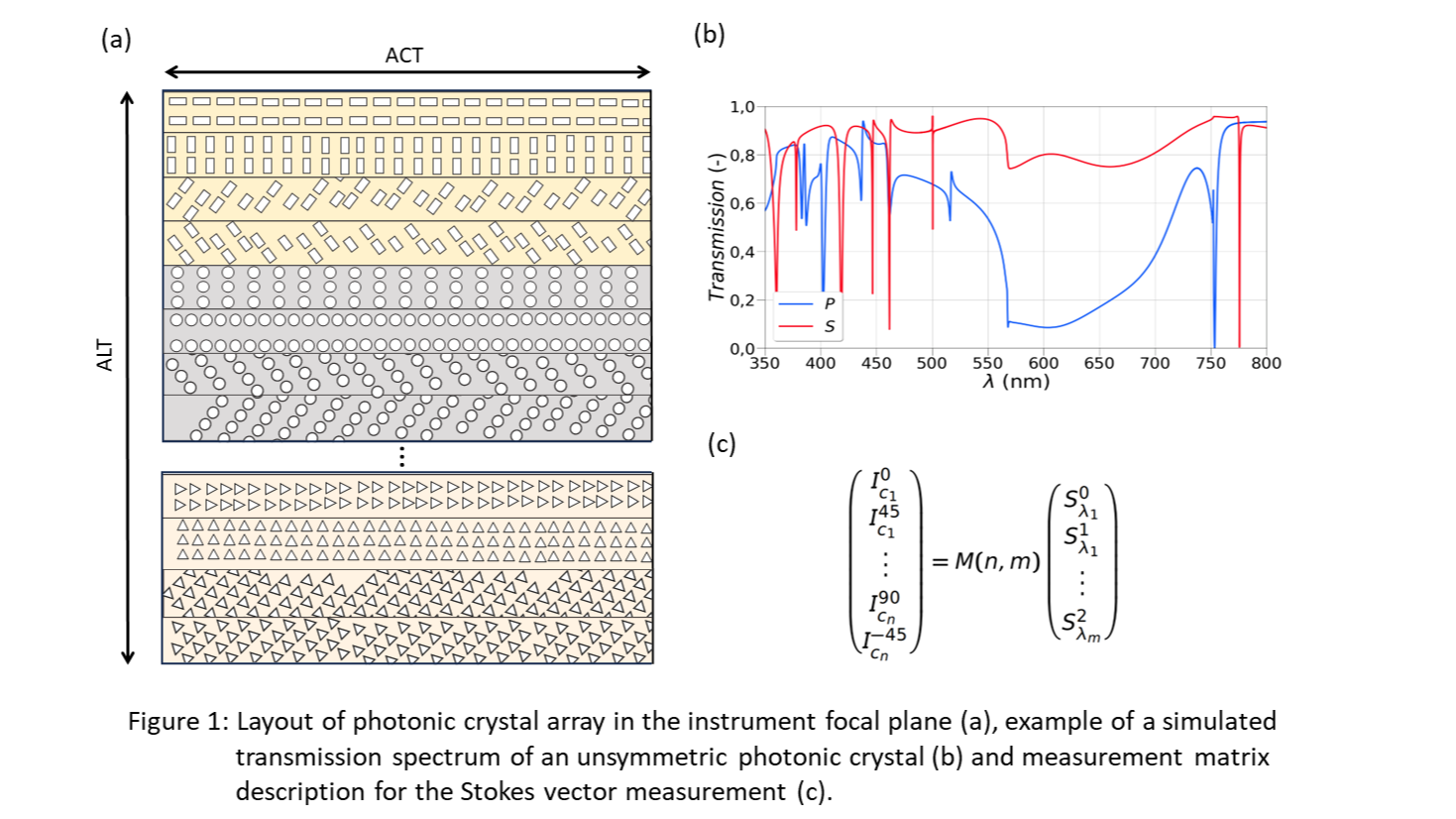In this system study we investigate the application of asymmetric photonic crystals for the miniaturization of spectropolarimeters for atmospheric aerosol measurements. Aerosols have a direct impact on climate forcing [1] and are cause for premature deaths due to air pollution [2]. Furthermore, aerosol measurements are needed to support greenhouse gas measurement satellites with light path corrections for full physical retrieval models [3]. In the earth observation scientific community, there is a strong demand for satellite data with a higher spatial and temporal resolution. A solution is employing smaller satellites to complement larger missions or satellite constellations enabled by smaller cost-efficient instruments. We propose a system study towards a spectropolarimeter with a lower volume (at least a factor 3) in comparison to existing instruments. The idea of the instrument is an extension of a recent concept where photonic crystals with tunable transmission spectra are placed on a detector from which a greenhouse gas concentration can be determined via computational inversion (see [4] or final project report on nebula).
In this study we will use asymmetric photonic crystals (hole patterns in thin dielectric films such as silicon nitride) in the visible spectral range as spectropolarimetric filters. Photonic crystals can rise to a spectrally diverse transmission response, and when the unit cells of the crystals are made asymmetric (for example with a different pitch in two dimensions) their response becomes polarization sensitive. From a set of 4 photonic crystals rotated by 45 degrees (see Fig. 1 (a)) and several sets of such photonic crystals the spectrum and polarization of the incident light can be reconstructed. With this focal plane design, the same spectral resolution as for the SPEXone for PACE instrument [5] might be reached, but without the need of a grating spectrometer which takes up the largest part of SPEXone's volume.
__________
[1] Bellouin, N., Boucher, O., Haywood, J. et al. Global estimate of aerosol direct radiative forcing from satellite measurements. Nature 438, 1138–1141 (2005). https://doi.org/10.1038/nature04348
[2] Silva, R., West, J., Lamarque, JF. et al. Future global mortality from changes in air pollution attributable to climate change. Nature Clim Change 7, 647–651 (2017). https://doi.org/10.1038/nclimate3354
[3] Rusli, S. P., Hasekamp, O., aan de Brugh, J., Fu, G., Meijer, Y., & Landgraf, J. (2021). Anthropogenic CO2 monitoring satellite mission: the need for multi-angle polarimetric observation. In Atmospheric Measurement Techniques (Vol. 14, Issue 2, pp. 1167–1190). Copernicus GmbH. https://doi.org/10.5194/amt-14-1167-2021
[4] M. Siemons, M. Hagenaar, A.J. Adam, R. Kohlhaas, "A compressive sensing with photonic crystals enabled spectrometer for trace gas observation," Proc. SPIE 12777, International Conference on Space Optics — ICSO 2022, 127776Y (12 July 2023); https://doi.org/10.1117/12.2691361
[5] Aaldert van Amerongen, Jeroen Rietjens, Jochen Campo, Ersin Dogan, Jos Dingjan, Raj Nalla, Jerome Caron, Otto Hasekamp, "SPEXone: a compact multi-angle polarimeter," Proc. SPIE 11180, International Conference on Space Optics — ICSO 2018, 111800L (12 July 2019); https://doi.org/10.1117/12.2535940
[6] McBride, B. A., Martins, J. V., Cieslak, J. D., Fernandez-Borda, R., Puthukuddy, A., Xu, X., Sienkiewicz, N., Cairns, B., and Barbosa, H. M. J.: "Pre-launch calibration and validation of the Airborne Hyper-Angular Rainbow Polarimeter (AirHARP) instrument", EGUsphere [preprint], https://doi.org/10.5194/egusphere-2023-865, 2023.
[7] Zhengqiang Li, Weizhen Hou, Jin Hong, Fengxun Zheng, Donggen Luo, Jun Wang, Xingfa Gu, Yanli Qiao, "Directional Polarimetric Camera (DPC): Monitoring aerosol spectral optical properties over land from satellite observation", Journal of Quantitative Spectroscopy and Radiative Transfer, Volume 218, 2018, Pages 21-37;https://doi.org/10.1016/j.jqsrt.2018.07.003.

